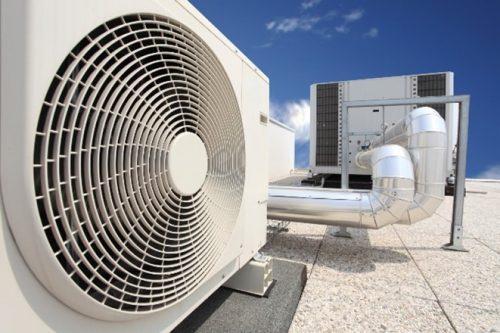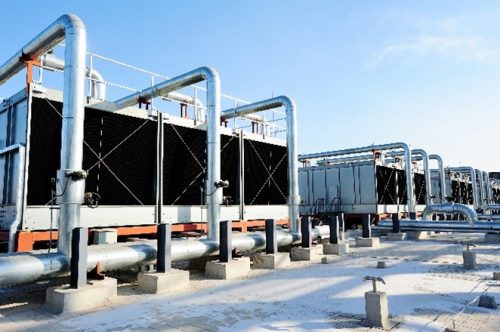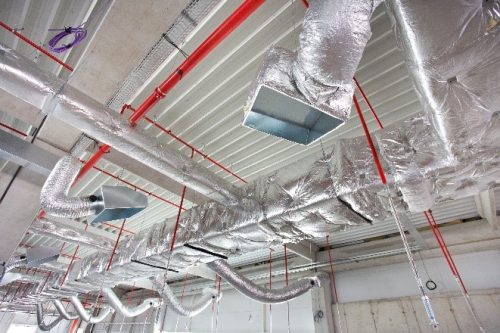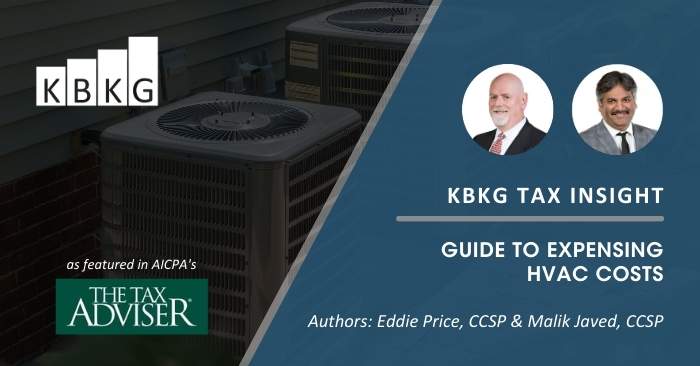As featured in AICPA Tax Adviser – April 15, 2021
Heating, ventilation, and air conditioning (“HVAC”) replacement costs can be significant expenses for businesses that own or lease real estate. This guide is intended to help tax practitioners distinguish between deductible repairs and more extensive work that must be capitalized.
 Each year, tax professionals who deal with real estate must evaluate the most recent building expenditures and determine which items should be deducted as a repair expense or capitalized. Of all the systems within a building, none are more affected by advances in technology than the heating, ventilation, and air conditioning (HVAC) system, which relies upon mechanical, electrical, and plumbing components.
Each year, tax professionals who deal with real estate must evaluate the most recent building expenditures and determine which items should be deducted as a repair expense or capitalized. Of all the systems within a building, none are more affected by advances in technology than the heating, ventilation, and air conditioning (HVAC) system, which relies upon mechanical, electrical, and plumbing components.
Without proper maintenance, the expected life of HVAC components can be drastically reduced, leading to expensive repairs. Tax professionals should be able to understand an HVAC invoice to determine whether the cost may be deducted as a repair expense. Compared to the alternative of depreciating the costs over a 27.5-year life for residential rental real estate or a 39-year life for commercial real estate, an incorrect conclusion may lead to a significant overpayment of current tax liability.
KBKG Insight:
The law known as the Tax Cuts and Jobs Act (TCJA), P.L. 115-97, makes HVAC costs eligible for expensing under Sec. 179. To be eligible, the HVAC costs must be for nonresidential real property that is placed in service after the date the property was first placed in service.
This guide provides tax preparers an outline of questions to ask clients when evaluating HVAC repair costs. Our engineering experts bridge the gap between the scope of HVAC work performed and rules set forth in the tangible property “repair” regulations (T.D. 9636).
Analysis
A capital improvement is defined as an amount paid after a property is placed in service that results in a betterment, adaptation, or restoration to the unit of property or building system (Regs. Sec. 1.263(a)-3(d)). Replacing a substantial portion of any major component of a building meets the criteria of a capital improvement. The HVAC system is one of the eight building systems specifically identified in the regulations to which the improvement rules must be applied as if the HVAC system is the unit of property.
 The regulations mention examples of HVAC system components, including compressors, furnaces, chillers, ducts, diffusers, air handlers, and cooling towers. Some of these are considered major components of the HVAC system because they perform a discrete and critical function in the overall HVAC system. Many other examples could have been included.
The regulations mention examples of HVAC system components, including compressors, furnaces, chillers, ducts, diffusers, air handlers, and cooling towers. Some of these are considered major components of the HVAC system because they perform a discrete and critical function in the overall HVAC system. Many other examples could have been included.
The science behind how HVAC systems work is beyond the scope of this article. Instead, the authors will identify the more common terms and components that are often referenced on invoices from HVAC contractors. Along with this basic understanding, a series of questions will guide readers toward understanding the proper treatment of these costs.
Step 1. Become familiar with the more common HVAC components found in commercial and residential rental buildings
Common major components:
- Air conditioner — designed to cool a space using a simple refrigeration cycle, normally reserved for smaller self-contained units used in residential buildings.
- Boiler — closed tank in which fluid is heated. The heated fluid exits the boiler for use throughout the building.
- Ductwork system — distributes air throughout the building and is most commonly made of either galvanized steel or aluminum.
- Furnace — component of an HVAC system that adds heat to air or an intermediate fluid by burning fuel (natural gas, oil, propane, butane, or other flammable substances).
- Packaged terminal unit — air conditioner and heater combined into a single, electrically powered unit, typically installed through a wall, and often found in hotels. Abbreviated PTAC.
- Piping system — transports heated or chilled water, as well as condenser water, throughout the building.
- Roof top unit (RTU) — an air handler designed for outdoor operation. Also known as a packaged unit.
- Chiller system — cools a liquid, which then flows through pipes throughout a building to other HVAC components to cool and usually dehumidify the air in the building.
- Air-cooled chillers — usually outside and consist of condenser coils cooled by fan-driven air.
- Water-cooled chillers — located inside a building. Heat from these chillers is carried by recirculating water to a heat sink such as an outdoor cooling tower.
- Cooling tower — specialized heat exchanger that transfers process heat from a water-cooled chiller to the atmosphere.
- Heat pump — compressor that cycles hot or cold air, which is designed to move thermal energy in the opposite direction of heat flow by absorbing heat from a cold space that is released to a warmer space.

Other common HVAC components:
- Coil — equipment that performs heat transfer to air when mounted inside an air-handling unit or ductwork. It is heated or cooled by electrical means or by circulating liquid or steam within it.
- Compressor — mechanical device that increases the pressure of a gas by reducing its volume.
- Condenser — component of the basic refrigeration cycle that removes heat from the system. The condenser is the hot side of an air conditioner or heat pump. This component is usually located outside the building.
- Evaporator — component in the basic refrigeration cycle that absorbs or adds heat to the system. Evaporators can be used to absorb heat from air or from a liquid. The evaporator is the cold side of an air conditioner or heat pump.
- Air handler — used to condition or circulate the air within the HVAC system. An air handler usually contains a blower, heating or cooling elements, filter racks or chambers, sound attenuators, and dampers. Air handlers usually connect to ductwork that distributes the conditioned air through the building and returns it to the air handler.
- Makeup air unit (MAU) — a larger air handler that conditions 100% outside air and no circulated air. These are often used in conjunction with commercial kitchen hoods to replace the air being exhausted from the kitchen.
- Terminal units — a specific type of air handler that only includes an air filter, coil, and blower. These smaller units are also called blower coils or fan coil units and are used to control the temperature of a single room.
- Thermostat — incidental component that monitors and regulates a heating or cooling system. It can be used to set the desired temperature at which it keeps the environment either heated or cooled.
- Variable air volume (VAV) unit — VAV systems will adjust the air flow rate to meet temperature requirements. Most new commercial buildings have VAV systems.

Step 2. Determine the unit of property
The final regulations require taxpayers to identify a building’s relevant “unit of property” (UOP) when distinguishing repairs from improvements. The HVAC system is one of the specifically defined building systems. If the taxpayer owns or leases the entire building, it must consider the entire HVAC system as a unit of property. If the taxpayer leases a portion of the building, then only the portion of the HVAC system that is leased is considered the unit of property.
Once the UOP has been determined, taxpayers are then able to apply the betterment and restoration tests.
Step 3. Apply the B-A-R-I tests — for betterment, adaptation, restoration, improvement
Is it a BETTERMENT?
Questions to assess whether the HVAC work results in a betterment to the unit of property under Regs. Sec. 1.263(a)-3(j) include:
- Why was the HVAC component replaced?
If it was due to sudden damage, the cost to bring the HVAC component back to the same condition using the same materials is not a betterment. - How much time elapsed between the building acquisition and the HVAC work?
Generally, if HVAC work needs to be done soon after the building was acquired (e.g., within 18 months) it might fall into the betterment category if the work corrected a material defect or condition that existed before the building was acquired. - What kind of HVAC component or system was there before, and what kind was it replaced with?
a. Newer HVAC components do not necessarily have longer expected lives. However, they do tend to produce increased operating efficiencies and more accurate and responsive controls.
If the new component produces a material increase in productivity, efficiency, strength, quality, or output of the HVAC system within the unit of property, the component will be considered a betterment. For example, if an old air conditioner with an energy efficiency rating of 10 SEER (seasonal energy efficiency ratio) is replaced with a unit rated as 18 SEER when current building standards only require a 13 SEER rating, this would be a material increase in efficiency. - Did the HVAC work relate to a physical enlargement of the building?
If so, the enlargement portion of the HVAC system is capitalized and, depending on the facts, possibly the entire HVAC system.
b. Were improved HVAC components used because comparable components were no longer available or technology has advanced?
i. If it is not practical to use the old type of HVAC component, it is generally not a betterment (e.g., an 8 SEER package unit from 1990 replaced today with a 13 SEER unit would not be a betterment).
ii. If the old HVAC materials performed worse than current industry standard HVAC material for that location and building type, it’s generally not a betterment under this test (e.g., replacing an old electromechanical type thermostat with a modern builder grade digital thermostat would not be a betterment).
Did it ADAPT the unit of property for a new use?
Questions to assess whether the HVAC work results in an adaptation to the unit of property under Regs. Sec. 1.263(a)-3(l) include:
Were the HVAC costs incurred as part of the conversion of an existing building space into a new or different use?
If so, the HVAC costs must be capitalized. For example, if the amount was paid to convert an office building into a restaurant, the entire amount, including HVAC costs, must be capitalized. Examples that do not constitute an adaptation include adding a sushi bar to a retail grocery store that already includes counters for prepared and made-to-order food, or a hospital that modifies its emergency room space to also include an outpatient surgery.
Is it a RESTORATION?
Questions to assess whether the HVAC work results in a restoration to the unit of property under Regs. Sec. 1.263(a)-3(k) include:
- Why did the HVAC component(s) need to be replaced?
If it was because of a casualty event and the taxpayer properly deducts a casualty loss by reducing the building’s basis by the amount of the loss, the cost of the new HVAC component(s) must be capitalized. If the building’s basis was less than the casualty loss, the excess portion is capitalized only if it meets all the other criteria for an improvement. - Was a major component replaced?
If the component performs a discrete and critical function in the operation or maintenance of the HVAC system, then it is a major component of the HVAC system. If a major component of the HVAC system or even a substantial structural portion of the major component is replaced, the amount paid is treated as an improvement. Common examples of major components would include chillers, cooling towers, boilers, furnaces, and rooftop packaged units. - How much of the HVAC system or major component was replaced?
If it can be determined that something less than a substantial structural portion of the major component was replaced, the amount paid can be treated as a repair expense. Based on examples from the tangible property regulations, we can conclude that if less than a third of a major component is replaced, it generally will not be considered a restoration. Here are a few examples:a. Replacing 20% of the building ductwork in a current tax year due to tenant turnover would not be considered a restoration.
b. Replacing three of 10 rooftop units in a current tax year would not likely be a restoration.
c. Replacing the only chiller in the HVAC system with a new model of similar efficiency and capacity would be considered a restoration because the chiller performs a discrete and critical function and represents a major component within the HVAC system.
- Was the HVAC work part of a project to return the building to ordinary operating condition after it had deteriorated to a state of disrepair and was no longer functional for its intended use?
Returning the the unit of property to its ordinarily efficient operating condition if the property has deteriorated to a state of disrepair and is no longer functional for its intended use is generally capitalizable as a betterment. However, most building structures can continue to function as intended with some degree of HVAC problems (e.g., poor energy efficiency, inconsistent temperature distribution) and repairs made during this stage can be considered a current-year expense assuming they are not a betterment. - Did the taxpayer claim a retirement loss or partial disposition deduction for any portion of the old HVAC system?
If so, the cost of the HVAC work is capitalized as a restoration.
Is it part of a larger IMPROVEMENT?
Was the HVAC work performed because of some other capital improvement project? If the scope of any other capital improvement project required the HVAC work, the associated HVAC costs would be depreciated along with the capital project.
Example. The renovation of an interior public space may require demolishing an existing mechanical room. Relocating the associated air handler and ductwork would be capitalized as part of the renovation project.
Know which questions to ask
Building owners often spend significant amounts to replace portions of various HVAC system components. Armed with a basic understanding of HVAC systems and the tangible property regulations, tax preparers can ask insightful questions to assemble the facts and circumstances and evaluate the nature of the work performed. Careful analysis will produce supportable rationales for appropriately treating the cost of HVAC work as either a current year repair expense or a capital improvement.
Contact our cost segregation specialist for more information.
Authors: Eddie Price, CCSP & Malik Javed, CCSP
Download KBKG Tax Insight: Guide to Expensing HVAC Costs
About the Authors
 Eddie Price, CCSP – Principal
Eddie Price, CCSP – Principal
Texas
Eddie is a Principal with KBKG and oversees the Southern region and its Texas-based operations. He is a Certified Cost Segregation Professional (CCSP) with the American Society of Cost Segregation Professionals. With over 35 years of cost segregation experience dating back to the Investment Tax Credit period, Eddie is one of the most experienced experts in the industry. » Full Bio
 Malik Javed, CCSP – Principal
Malik Javed, CCSP – Principal
New York
Malik Javed is a Principal and oversees engineering operations for Cost Segregation projects from KBKG’s New York practice. He is a Certified member of the American Society of Cost Segregation Professionals (ASCSP) and is currently a member of the ASCSP Technical Standards Committee. Since joining KBKG in 2004, Malik has performed thousands of Cost Segregation studies for clients in various industries and regularly reviewed architectural and engineering drawings and construction cost budgets. » Full Bio


